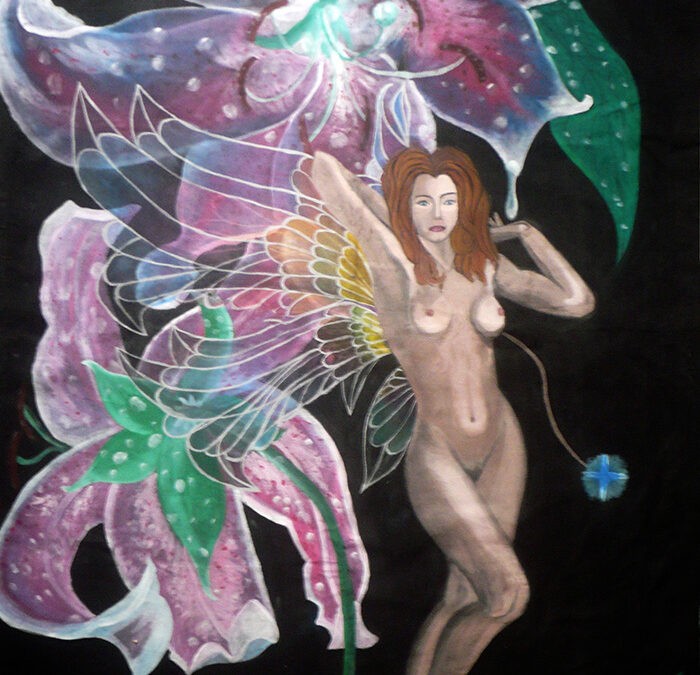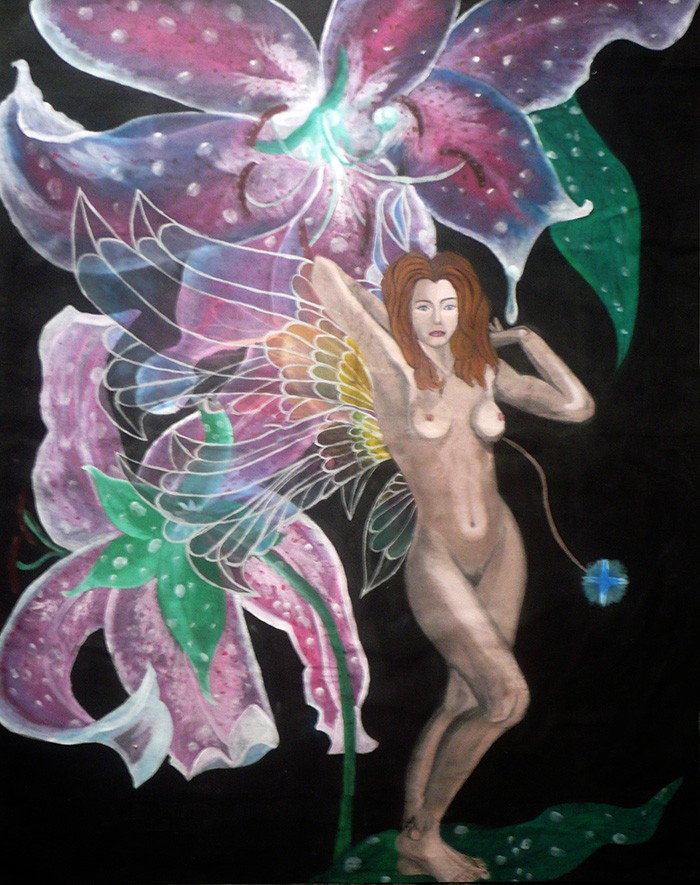
Lilium Fairy
Lilium Fairy
Serie: Large Format Artworks
Technique: Latex on canvas
Size: 145 x 180 cm
Year: 2003
A fairy (from the Latin fatum: fate, destiny) is a fantastic and ethereal creature, generally personified in the form of a beautiful woman, who are protectors of nature, a product of imagination, tradition or beliefs and belonging to that fabulous world of the elves, gnomes, goblins, mermaids and giants that colors the legends and superstitions of all ancient peoples.
Initially human proportions were attributed to fairies, but Shakespeare's tiny, ethereal creatures strongly influenced later conceptions of English poets.
The "Lilium Fairy" is a composition that shows precisely a tiny fairy, capable of standing on the leaf of a lilium, and receiving a drop of dew from its lush flower.
Its wings, like stained glass, reveal the beauty of the floral background, recreating in its shape the curves of the petals and giving the sensation of being as fragile and ethereal as those of a butterfly.
NOT AVAILABLE FOR SALE
< Back to PORTFOLIO



